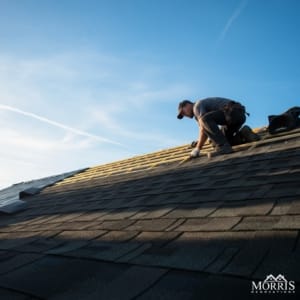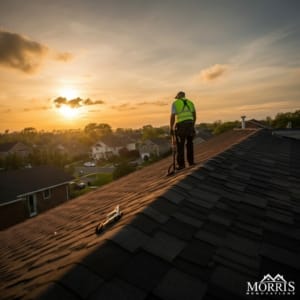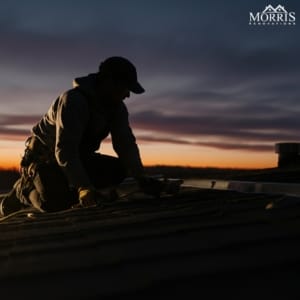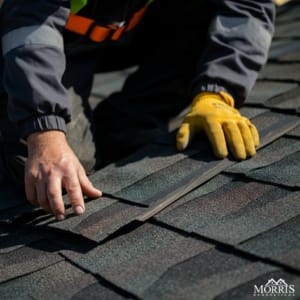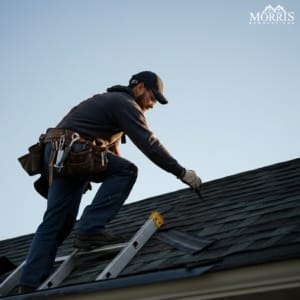Choosing the Best Siding for New Jersey
Choosing the Best Siding for New Jersey

Choosing the Best Siding for New Jersey
Choosing the right siding for your home is a crucial decision. It’s not just about aesthetics.
Your choice of siding can significantly impact your home’s durability and energy efficiency. This is especially true in New Jersey, where the climate can be quite varied.
This guide aims to help homeowners in New Jersey navigate the process of choosing the best siding. We’ll explore various siding options, their pros and cons, and how they fare in New Jersey’s climate.
We’ll also delve into the importance of professional siding installation and replacement. Choosing a reputable contractor can make a world of difference in the longevity and performance of your siding.
By the end of this guide, you’ll be equipped with the knowledge to make an informed decision. You’ll understand what to look for, what to avoid, and how to get the best value for your investment.
Understanding New Jersey’s Climate and Siding Needs
New Jersey’s climate poses unique challenges for homeowners. Summers can be hot and humid, while winters bring freezing temperatures. These fluctuations mean that your home’s siding must withstand diverse weather conditions.
Frequent storms and high winds also mark the state. Durable siding can protect your home from these elements and prevent potential damage over time.
When selecting siding, consider the following climate-related factors:
- Moisture Resistance: Essential for coping with rain and humidity.
- Temperature Durability: Ability to handle temperature swings without cracking or warping.
- Wind Resistance: Important for homes in coastal or open areas.
By understanding these climate factors, you’ll be better equipped to choose siding materials that last. The right siding not only shields your home from the elements but also enhances its energy efficiency. Adequate insulation helps maintain a comfortable indoor environment year-round. Understanding how siding interacts with New Jersey’s climate is crucial. It ensures your home remains attractive, functional, and comfortable through every season.
Popular Siding Materials in New Jersey
Homeowners in New Jersey have many siding options to explore. Each material offers unique advantages and can match diverse home designs and budgets.
Vinyl siding remains a popular choice due to its cost-effectiveness and ease of maintenance. Wood siding brings natural appeal but requires regular upkeep to maintain its beauty.
Fiber cement siding offers versatility, merging durability with a wood-like appearance. Aluminum siding is valued for its lightweight properties and recyclability.
Stucco siding provides a unique look that stands out while offering long-lasting performance. Knowing the pros and cons of these materials helps in selecting the ideal one for your home.
Here’s a quick overview:
- Vinyl: Affordable and low-maintenance.
- Wood: Attractive but higher upkeep.
- Fiber Cement: Durable and versatile.
- Aluminum: Lightweight, recyclable.
- Stucco: Unique, durable.
Consult with siding contractors in NJ to see samples and make informed choices. Each material comes with its own considerations, such as cost, durability, and aesthetic value. Different homes and lifestyles may favor one material over another. Take into account both the short-term appeal and long-term impact on your home’s value and comfort.
Vinyl Siding: Affordable and Durable
Vinyl siding is an economical option for many homeowners. Its affordability does not compromise its effectiveness. It withstands varied weather and requires less maintenance than some materials.
Additionally, vinyl siding offers a wide range of colors and styles. Homeowners can easily find a design that complements their home’s architecture. Cleaning is simple; usually, a power wash is sufficient to keep it looking new.
However, vinyl is not without its downsides. It can crack in extremely cold weather, and intense sunlight may cause fading over time. Despite these concerns, vinyl siding remains a favorite due to its cost-effectiveness. Its low maintenance and versatility make it an attractive option for those considering siding replacement in New Jersey.
Wood Siding: Timeless Beauty with Maintenance
Wood siding brings a classic and charming look to homes. Its natural beauty is unmatched, adding warmth and authenticity to any architectural style.
Customization is a major advantage of wood siding. Homeowners can stain or paint it to match their design preferences. The material can also be crafted into various shapes and textures.
Despite its charm, wood siding needs regular maintenance to prevent rot and insect damage. Routine painting or staining is essential to extend its lifespan and maintain its appearance. For those who value aesthetics and are willing to maintain it, wood siding is an excellent choice. It offers unique appeal and authenticity that synthetic materials cannot duplicate.
Fiber Cement Siding: The Versatile Choice
Fiber cement siding is popular for its durability and versatility. This material mimics the look of wood, providing the same warmth and texture without the high maintenance costs.
Made from a blend of cement, sand, and cellulose fibers, it withstands harsh weather. Fiber cement is resistant to rot, insects, and fire, making it a long-lasting option.
The upfront cost of fiber cement can be higher than vinyl. However, its longevity and minimal maintenance expenses make it a worthy investment. Fiber cement siding is also environmentally friendly, as it is made from sustainable materials. It’s perfect for those seeking aesthetic flexibility and longevity in siding installation NJ projects.
Aluminum Siding: Lightweight and Recyclable
Aluminum siding is known for its lightweight nature and recyclability. It’s easy to install and offers excellent resistance to fire and pests.
This siding can last for decades with proper care. It’s less prone to rust compared to steel siding, making it suitable for coastal areas.
However, aluminum can dent easily and may fade with prolonged sun exposure. Regular painting can help maintain its appearance. For eco-conscious homeowners, its recyclability makes aluminum an appealing choice.
Stucco Siding: Unique Aesthetic and Durability
Stucco siding is distinct and highly durable. Its textured finish offers a distinctive look that enhances home exteriors.
Stucco is fire-resistant and can last many years with minimal upkeep. It’s particularly good for soundproofing and insulating homes.
The installation process is complex and must be done by experienced contractors. Stucco’s unique appearance comes with the cost of professional installation. When done right, it can significantly boost a home’s curb appeal. It appeals to those who appreciate its textured beauty and durability.
Factors to Consider When Choosing Siding
Choosing siding for your New Jersey home involves multiple considerations. Beyond aesthetics, practical aspects like energy efficiency and durability are vital.
When selecting siding, it’s important to evaluate:
- Weather Resistance: Handles NJ climate variations.
- Energy Efficiency: Impacts insulation and energy costs.
- Maintenance Requirements: Time and cost involved.
- Aesthetic Value: Matches home design and improves curb appeal.
Consider how each siding material aligns with your lifestyle and long-term plans for your property. Vinyl, wood, fiber cement, aluminum, and stucco each have unique attributes and limitations. It’s crucial to assess how well these align with your needs and the local environment. Pay attention to seasonal factors, as they can influence installation and maintenance schedules, especially in the variable New Jersey climate. Always remember that the right siding improves your home’s comfort and long-term value.
Energy Efficiency and Insulation
Energy efficiency in siding is key. It can significantly affect your home’s insulation and energy bills. Siding materials, such as fiber cement and insulated vinyl, enhance your home’s energy efficiency by reducing thermal bridging. In New Jersey, where temperatures vary greatly, proper siding can reduce heating and cooling costs. Insulation quality varies, so inquire about R-values when comparing options. Better insulation leads to increased indoor comfort and lower energy costs.
Aesthetic Appeal and Curb Value
The aesthetic appeal of siding can boost your home’s curb appeal and resale value. The right color and style match not only your home’s architecture but also neighborhood trends. Choose siding that enhances your home’s design and distinguishes it from others. Customizable options like wood and fiber cement allow for tailored aesthetics. Investing in attractive siding increases your property’s marketability. It reflects your personal style and complements your home’s surroundings.
Longevity and Maintenance
The longevity of siding affects your investment’s value. Durable materials like fiber cement and aluminum offer long-lasting protection. Longevity often correlates with maintenance requirements; wood requires more upkeep than vinyl. Regular maintenance extends siding lifespan, but some materials demand less frequent care. Factor in these maintenance needs when selecting siding. Evaluate if you’re ready to commit to the upkeep a material demands. A material’s durability should align with your lifestyle and capacity for regular maintenance tasks.
Cost and Investment
The cost of siding is a major consideration but should be viewed as a long-term investment. Upfront costs vary across materials, with vinyl being economical and fiber cement more costly. Evaluate siding’s durability and maintenance to determine its true cost over time. High-quality siding may cost more initially but often leads to lower maintenance expenses. Consider financing options and potential tax credits when budgeting for siding. A well-planned siding investment enhances your home’s value and energy efficiency.
Selecting the Right Siding Contractor in NJ
Choosing a siding contractor in New Jersey involves careful consideration. A good contractor is crucial for ensuring quality installation and maximizing siding lifespan. While there are many options, finding the right fit is essential for a successful project.
When selecting a contractor, consider the following factors:
- Experience: Look for established contractors with a track record.
- References: Check customer reviews and contractor portfolios.
- Communication: Ensure open and clear communication throughout the process.
Take the time to research and compare multiple contractors. Request detailed quotes and ask about their experience with your specific type of siding. A reliable contractor will guide you through the process and provide valuable insights into material choices. They can also help you understand local building codes and requirements, ensuring compliance and smooth execution.
Licensing, Insurance, and Reputation
Licensing and insurance are fundamental when hiring a contractor. Verify that your chosen contractor holds a valid license to operate in New Jersey. This ensures they meet state standards and regulations. Check for insurance coverage as well; it safeguards against potential liabilities.
A contractor’s reputation can speak volumes about their quality of work. Seek recommendations from friends or family and explore online reviews. Consider the contractor’s history of completed projects to assess their reliability and skill.
Understanding the Replacement Process
Familiarize yourself with the siding replacement process for a seamless experience. The process begins with an initial consultation to discuss your needs and preferences. A reputable contractor will provide an assessment of your current siding condition.
Once you’ve chosen your siding material, the contractor will handle the removal of old siding, if necessary. They will then manage any repairs needed before installation. Understanding these steps helps you prepare for any disruptions during the project. Clear communication with your contractor will keep you informed and at ease.
Preparing for Installation
Preparation is key to a successful siding installation in New Jersey. Before the project commences, confirm any logistical details with your contractor. This includes timelines, project milestones, and expectations for clean-up and disposal.
Ensure your property is accessible and clear of obstacles that might hinder installation. Discuss any specific requirements or preferences with your contractor ahead of time. Proper preparation minimizes complications and accelerates the installation process, leading to a smoother, more efficient project outcome.
Conclusion: Making an Informed Decision
Choosing the best siding for your New Jersey home is a significant investment. It involves understanding your options, assessing needs, and aligning with experienced contractors. Each siding material offers unique benefits that cater to various aesthetic preferences, budget constraints, and climate conditions.
Making an informed decision ensures your home remains protected, energy-efficient, and appealing. Take the time to research and consult with professionals. By considering factors like durability, cost, and maintenance, you optimize your investment. A thoughtful approach to selecting siding will enhance your home’s value and comfort for years to come.
